River Red Gum
- November 24, 2023
- 0 comment
The River Red Gum tree, scientifically known as Eucalyptus camaldulensis, stands as an iconic symbol of Australia’s diverse landscapes. With its majestic stature and distinctive, smooth bark that peels away in strips to reveal a striking reddish hue, this eucalyptus species is a true testament to the beauty of the continent’s natural flora.

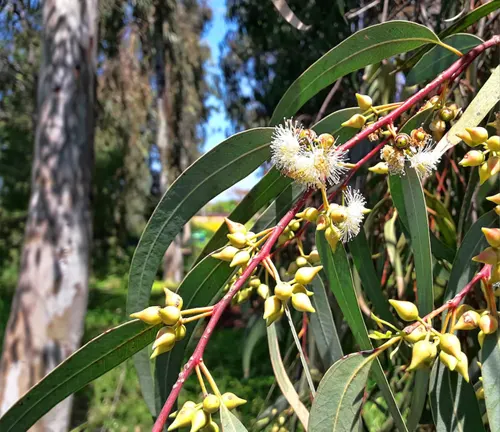
Thriving along riverbanks, floodplains, and watercourses, the River Red Gum is well-adapted to the often harsh Australian climate. Its lance-shaped leaves release a characteristic aromatic scent, adding to the sensory experience of encountering these trees in their native habitat. Beyond their aesthetic appeal, River Red Gums play a crucial ecological role, providing habitat for various wildlife and contributing to the overall health of riparian ecosystems.
Historically significant to Indigenous cultures, these trees have been utilized for their medicinal properties and are deeply woven into the fabric of Australia’s environmental and cultural tapestry. Whether standing solitary against a vast outback backdrop or forming enchanting riverine forests, the River Red Gum remains an integral part of Australia’s natural heritage.
| Characteristic | Description |
|---|---|
| Scientific Name | Eucalyptus camaldulensis |
| Common Name | River Red Gum |
| Family | Myrtaceae |
| Height | Up to 40 meters (131 feet) |
| Bark | Smooth, peeling in long, thin strips; reveals red wood |
| Leaves | Lance-shaped, glossy green; aromatic when crushed |
| Habitat | Riverbanks, floodplains, watercourses |
| Climate | Well-adapted to the Australian climate |
| Ecological Role | Provides habitat for wildlife; contributes to riparian ecosystems |
| Cultural Significance | Historically used by Indigenous cultures for medicinal purposes |
| Geographic Range | Widespread across Australia |
| Environmental Impact | Important in stabilizing riverbanks and preventing erosion |
| Conservation Status | Generally not threatened; varies regionally |
| Uses | Timber production, cultural practices, ecological restoration |
| Growth Rate | Fast-growing in favorable conditions |
| Flowering Time | Summer to early autumn |
| Seed Dispersal | Capsules release small seeds, dispersed by wind |
Botanical Beauty of “River Red Gum”
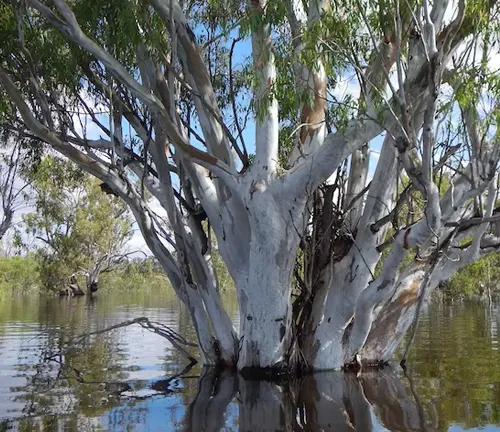
The “River Red Gum” (Eucalyptus camaldulensis) stands as a botanical marvel, gracing the Australian landscape with its majestic presence. Renowned for its towering height, reaching up to 40 meters, and distinctive smooth bark that gracefully peels away to reveal a striking redwood, this eucalyptus species captivates all who encounter it. The lance-shaped leaves, a glossy green, emit a fragrant aroma when crushed, adding to the sensory allure of this natural beauty.
Woodland Elegance
In the realm of Australian woodlands, the River Red Gum reigns supreme, imparting an unparalleled elegance to its surroundings. Whether standing solitary against the vast outback or forming enchanting riverine forests, these trees create a visual spectacle that defines the unique character of the Australian landscape. The smooth, reddish bark further enhances their aesthetic appeal, making them a symbol of natural grace and resilience.
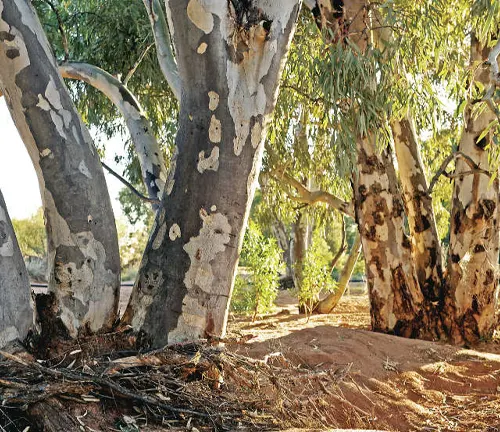
Ecological Importance
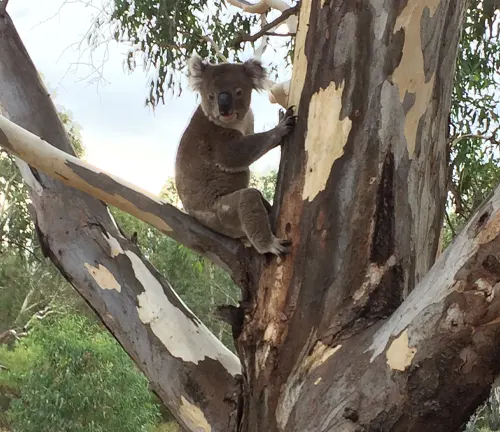
Beyond its visual splendor, the River Red Gum plays a vital role in maintaining the ecological balance of its habitat. Thriving along riverbanks, floodplains, and watercourses, these trees provide crucial habitat for a diverse array of wildlife. Their extensive root systems contribute to soil stabilization, preventing erosion and ensuring the health of riparian ecosystems. The presence of River Red Gums is a testament to the resilience of nature and its intricate interplay of flora and fauna.
Cultivation and Conservation
Cultivating the River Red Gum requires an understanding of its specific ecological needs. While these trees are well-adapted to the Australian climate, careful consideration must be given to soil conditions and water availability. Conservation efforts are crucial to preserving the natural habitats where River Red Gums thrive. By protecting these environments, we not only safeguard the trees themselves but also the rich biodiversity that depends on them.
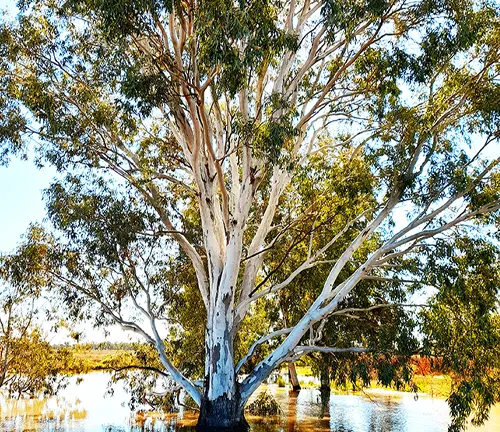
Fragrance
One cannot discuss the River Red Gum without acknowledging its aromatic contribution to the Australian landscape. The crushed leaves release a distinctive fragrance, creating an olfactory experience that adds to the overall allure of these trees. This natural perfume is a sensory reminder of the interconnectedness between humans and the environment, as well as the cultural significance of these trees.
Soil Stabilization
One of the unsung heroes of the River Red Gum is its role in soil stabilization. The extensive root systems of these trees help bind the soil together, preventing erosion along riverbanks and floodplains. This not only protects the trees themselves but also contributes to the overall health of the surrounding ecosystem. The River Red Gum, therefore, acts as a guardian of the land, ensuring its longevity for future generations.
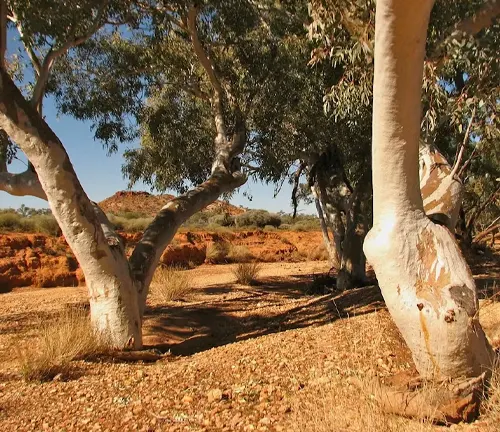
Common Uses
The River Red Gum is not merely a botanical wonder; it is also a valuable resource with various practical applications. The timber produced by these trees is highly sought after for its strength and durability. Historically, Indigenous cultures utilized the tree for its medicinal properties, showcasing the diverse ways in which humans have interacted with and benefited from this remarkable species.
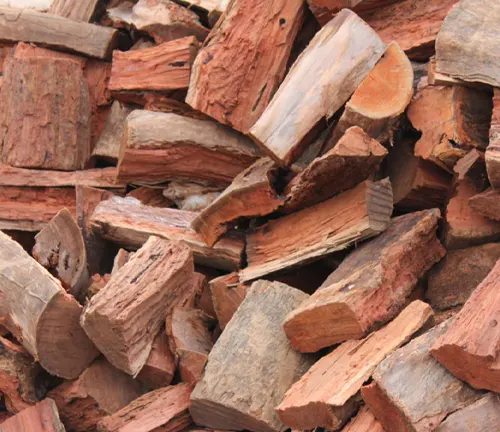
Benefits
The benefits of the River Red Gum extend far beyond its visual and practical appeal. From providing habitat for wildlife to contributing to soil health and offering cultural significance to Indigenous communities, these trees are integral to the Australian ecosystem. Recognizing and appreciating the multifaceted benefits of the River Red Gum is essential for fostering a deeper understanding of the intricate web of life it supports and sustains.
Different Species
Eucalyptus camaldulensis
This is the most widespread and well-known species referred to as the River Red Gum. It is found across Australia and is particularly associated with riverbanks and watercourses.

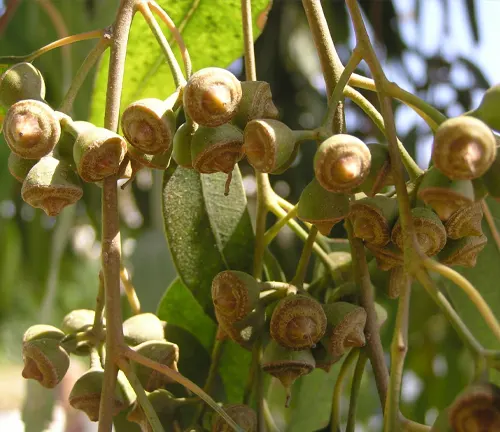
Eucalyptus camaldulensis subsp. camaldulensis
This is the nominate subspecies of Eucalyptus camaldulensis and is commonly found in various habitats, including riverbanks, floodplains, and inland areas.
Eucalyptus camaldulensis subsp. obtusa
This subspecies is found in the northern parts of Australia and is adapted to tropical conditions. It has slightly different characteristics compared to the nominate subspecies.
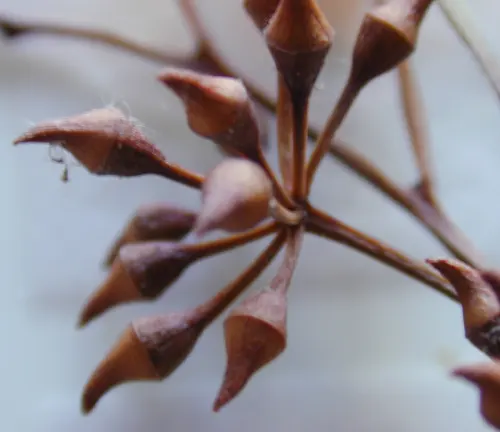
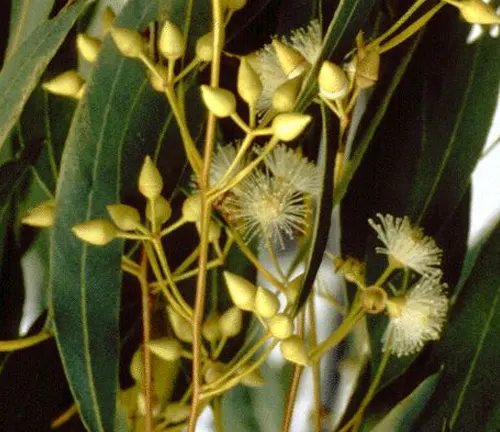
Eucalyptus camaldulensis subsp. simulata
This subspecies is found in the southern parts of Australia and has adaptations to cooler climates. It may exhibit variations in growth patterns and leaf characteristics.
Frequently Asked Questions (FAQs)
- What is the River Red Gum?
The River Red Gum (Eucalyptus camaldulensis) is a species of eucalyptus tree native to Australia, known for its towering height, distinctive smooth bark, and reddish wood. - Where is the River Red Gum found?
The River Red Gum is widespread across Australia, commonly found along riverbanks, floodplains, and watercourses. - What are the ecological roles of River Red Gums?
River Red Gums play a vital ecological role by providing habitat for wildlife, contributing to soil stabilization, and supporting the health of riparian ecosystems. - How do you cultivate River Red Gums?
Successful cultivation of River Red Gums requires consideration of soil conditions, water availability, and adherence to their native habitat preferences. Local climate and environmental factors should be taken into account. - Are there different species or subspecies of River Red Gum?
Yes, within the Eucalyptus genus, there are various subspecies of River Red Gum, such as Eucalyptus camaldulensis subsp. camaldulensis, Eucalyptus camaldulensis subsp. obtusa, and Eucalyptus camaldulensis subsp. simulata. - What is the significance of the River Red Gum in Indigenous cultures?
The River Red Gum holds cultural significance for Indigenous communities, historically used for medicinal purposes and playing a role in cultural practices. - What is the fragrance of the River Red Gum?
The crushed leaves of the River Red Gum emit a distinctive aromatic fragrance, adding to the sensory experience of encountering these trees. - How does the River Red Gum contribute to soil stabilization?
The extensive root systems of River Red Gums help bind the soil together, preventing erosion along riverbanks and floodplains. - What are the common uses of River Red Gum?
River Red Gum timber is highly valued for its strength and durability. Historically, Indigenous cultures used the tree for medicinal purposes. - Is the River Red Gum under conservation concern?
Generally, the River Red Gum is not considered threatened; however, conservation efforts are essential to protect its natural habitats and ensure its continued health.


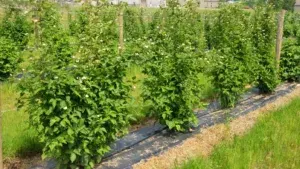
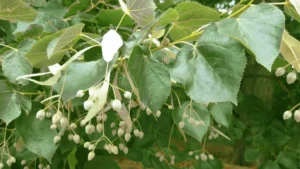
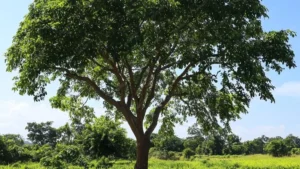
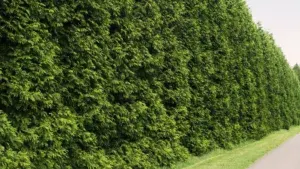
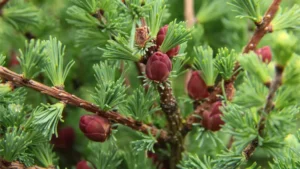

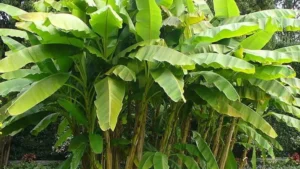
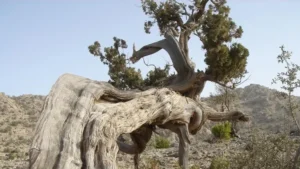
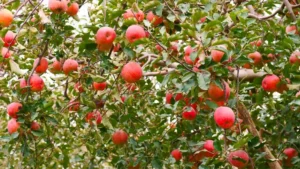
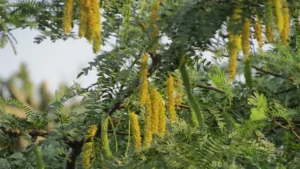

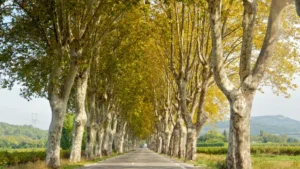
Leave your comment